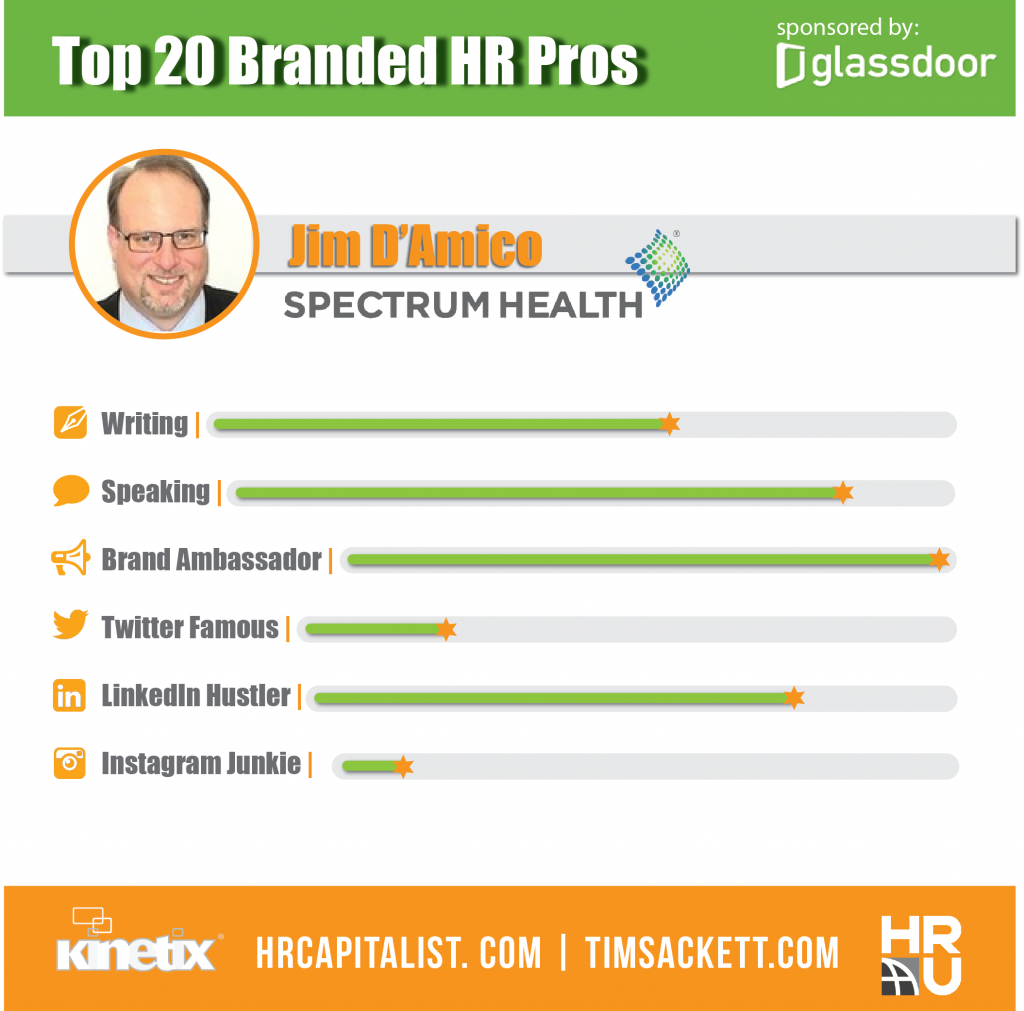Let’s face it – Fearful of the spotlight and conservative to a fault, HR pros generally aren’t the best examples to look towards when it comes to professional branding. Kris Dunn (Kinetix RPO, The HR Capitalist) and Tim Sackett (HRU Technical Resources, TimSackett.com) think that needs to change. That’s why they created this series – The Top 20 Branded HR Pros(sponsored by the team at Glassdoor).
KD and Tim searched the globe for HR Pros who used the tools at their disposal (writing, speaking, social and more) to brand themselves in the HR space, but limited the results to actual practitioners in the areas of HR, Recruiting and Talent Management. No consultants, no vendors. They found out well-branded HR pros who are actual practitioners are hard to find.
Tim and KD are running the Top 20 they found here on the HR Capitalist and at TimSackett.com. No rankings, just inclusion in the list and some notes on why. There are at least 20 well-branded HR Pros in the world. These are their stories.
____________________________________
Jim D’Amico was born to work in Talent Acquisition. He’s the kind of guy who strikes up conversations with you while you wait in line at Starbucks hoping no one will strike up a conversation with you! The great part of about Jim, is once he does strike up that conversation, you find out you just had a pretty cool conversation!
Jim is the Director of Talent Acquisition at Spectrum Health in Grand Rapids, MI. Jim is personally responsible for branding his TA team, “The Best Damn Talent Acquisition Team on the Planet!” To back up this assertion, ERE voted Spectrum Health the #1 Talent Acquisition team of 2015. Jim is also the co-Founder of the Michigan Recruiters Conference, held bi-annually across the state to help other corporate TA shops develop into greatness!
Check out Jim’s player card:
Jim has 15 years of experience in the Talent Acquisition game, with both domestic and international assignments. His current role in healthcare supports an employee base of 24,000 and his team will hire over 5,000 in 2015 alone!
Jim’s branding game is anchored around his writing and speaking. He’s a regular on the ERE speaking circuit, and a frequent contributor to the ERE writing side as well. Jim also has been active and involved in many local grassroots efforts to support recruiting as a function in the communities he lives. Most recently with the Michigan Recruiters Conference, but he also has worked on similar projects in West Michigan and Minnesota as well.
Jim is the poster child for being a Brand Ambassador. I mean, seriously, who comes in and names their TA team “The Best Damn TA Team on the Planet!” Jim Does! That takes a ton of confidence to know that while we might not be ‘that’ yet, we are going to be! ERE’s award this years solidified the title.
A fun fact about Jim? He moonlights as a standup Comic! He also does a ton of volunteer work in around Grand Rapids, MI. Basically, branding, professionally and personally is who he is. If you get a chance to catch him on Recruiting/HR speaking circuit make sure you do, he’s well worth it. Otherwise, connect with him on LinkedIn, you can try on Twitter (he’s a not a huge Tweeter), and don’t even try on Instagram!
———————————————————–
The Top 20 Branded HR Pros is brought to you by Glassdoor, who invites you to attend the Annual Glassdoor Employer Branding Summit on September 25th, where a stellar speaker lineup of industry experts and thought leaders exploring the intersection of employer branding and talent acquisition, the candidate experience and employee engagement.
Tickets are sold out, but wait! You can attend the livestream online featuring studio coverage with Kris Dunn and Tim Sackett by registering here (click to register). Fun and games are sure to be a part of that coverage.

